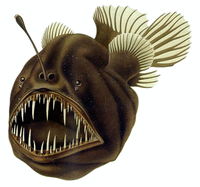
Photo from wikipedia
Abstract Reductogonium iroquois gen. nov. sp. nov., a new genus and species of paramunnid isopods from the Northwest Pacific open abyssal plain to the east of the Kuril-Kamchatka Trench, is… Click to show full abstract
Abstract Reductogonium iroquois gen. nov. sp. nov., a new genus and species of paramunnid isopods from the Northwest Pacific open abyssal plain to the east of the Kuril-Kamchatka Trench, is described based on materials from the KuramBio expedition (2012). The new genus is distinguished from other paramunnid genera by its reduced pereonite 7 that lacks appendages in adult individuals (one seta is presented instead of the pereopod VII on its position). It is also distinguished by its head, which has a medial crest bearing a tuft of setae on its posterior part, and by the extremely long articles of antennae and pereopods. The unusual paedomorphic features of the new genus might be adaptations to deep-sea conditions. Paedomorphosis was recorded for different taxa of deep-sea animals. The reduction of the last pair of pereopods, which corresponds to the state of manca stages, was observed independently in different families and orders of Isopoda. Finding a new species and a new genus of the Paramunnidae with paedomorphic features confirmed that this phenomenon is a common evolutionary strategy for deep-sea Asellota.
Journal Title: Progress in Oceanography
Year Published: 2019
Link to full text (if available)
Share on Social Media: Sign Up to like & get
recommendations!